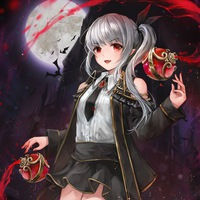
Описати умови життя козаків та види їх бойового мистецтва.
 0
0
 0
0
Ответы на вопрос
 Внимание! Ответы на вопросы дают живые люди. Они могут содержать ошибочную информацию, заблуждения, а также ответы могут быть сгенерированы нейросетями. Будьте внимательны. Если вы уверены, что ответ неверный, нажмите кнопку "Пожаловаться" под ответом.
Внимание! Ответы на вопросы дают живые люди. Они могут содержать ошибочную информацию, заблуждения, а также ответы могут быть сгенерированы нейросетями. Будьте внимательны. Если вы уверены, что ответ неверный, нажмите кнопку "Пожаловаться" под ответом.

Ответ:
Умови життя козаків та їх бойове мистецтво мають багато особливостей, які визначалися їхнім способом життя та потребами.
Умови життя козаків:
1. **Селянське сільське господарство**: Багато козаків були селянами, які ведли сільське господарство. Вони вирощували продукти харчування, такі як зерно, овочі, і вели худобу.
2. **Номадичний спосіб життя**: Деякі групи козаків, такі як запорожці, вели номадичний спосіб життя, пересуваючись між різними областями та таборами.
3. **Військова служба**: Багато козаків були військовою кастаною і входили до різних козацьких загонів. Вони служили в армії та брали участь у різних війнах та конфліктах.
4. **Суворі умови**: Умови життя були важкими, зокрема для номадичних козаків. Вони стикалися з важкими кліматичними умовами, відсутністю комфорту та постійними загрозами від інших держав та народів.
Види бойового мистецтва козаків:
1. **Стрільба зі стрілецької зброї**: Козаки були відомі своєю вмінням стріляти з мушкетів, аркебусів та інших видів вогнепальної зброї.
2. **Військова тактика**: Козаки використовували різні військові тактики, зокрема геройську оборону, герилью та швидку конницю для нанесення ударів ворогові.
3. **Бойовий ніж і шаблі**: Козаки володіли вмінням використовувати бойовий ніж та шаблю у ближньому бою.
4. **Конні війська**: Козаки були відомі своєю конністю та використовували коней як важливий елемент військової стратегії.
5. **Бойова пісня та психологічна витривалість**: Козаки також використовували бойову пісню та психологічну витривалість для підвищення морального духу та відваги в бою.
Усі ці аспекти життя та бойового мистецтва були важливими для козацької культури та визначали їхню роль в історії.
 0
0
 0
0

Conditions of Life for Cossacks
The Cossacks were a group of predominantly East Slavic people who lived in the region of Eastern Europe, particularly in what is now Ukraine and Russia. They emerged as a distinct social and military group in the 15th and 16th centuries. The conditions of life for the Cossacks were shaped by their unique social structure, military organization, and relationship with the ruling powers of the time.
Social Structure: The Cossacks had a hierarchical social structure that was based on military service. At the top of the hierarchy were the elected leaders known as hetmans, who were responsible for leading military campaigns and governing the Cossack communities. Below the hetmans were the officers, followed by the rank-and-file Cossacks. The Cossack communities were organized into military units called "sotnias," which were further divided into smaller groups known as "kurens."
Self-Governance: The Cossacks enjoyed a degree of self-governance within their communities. They had their own laws and customs, and decisions were made through a democratic process involving the participation of all adult male Cossacks. This self-governance allowed the Cossacks to maintain a sense of independence and autonomy.
Military Service: The Cossacks were renowned for their military prowess and played a significant role in the defense of their territories. They were skilled horsemen and expert fighters, known for their guerrilla warfare tactics and swift cavalry attacks. The Cossacks formed a vital part of the military forces of the Polish-Lithuanian Commonwealth and the Russian Empire, often serving as irregular troops or border guards.
Territorial Expansion: The Cossacks were also known for their territorial expansion. They actively participated in military campaigns and often sought to expand their territories by conquering new lands. This expansionist policy sometimes brought them into conflict with neighboring powers, such as the Ottoman Empire and the Crimean Khanate.
Types of Cossack Martial Arts
The Cossacks developed their own unique forms of martial arts, which were an integral part of their military training and combat techniques. These martial arts were designed to enhance their fighting skills and adapt to the specific conditions of warfare in the region. Here are some of the notable types of Cossack martial arts:
1. Hopak: Hopak is a traditional Ukrainian dance that originated among the Cossacks. It combines elements of acrobatics, martial arts, and folk dance. Hopak is characterized by high jumps, spins, and intricate footwork, often performed in groups or as a solo dance. While primarily a dance form, Hopak also incorporates combat techniques and movements derived from Cossack martial arts.
2. Boyovyi Hopak: Boyovyi Hopak, also known as Combat Hopak, is a martial arts form derived from Hopak. It focuses on practical combat techniques and self-defense maneuvers. Boyovyi Hopak incorporates strikes, kicks, throws, and grappling techniques, emphasizing agility, speed, and precision.
3. Perekhrest: Perekhrest is a Cossack martial art that emphasizes close-quarters combat and weapon skills. It involves the use of various traditional Cossack weapons, such as the saber, lance, and whip. Perekhrest techniques include strikes, parries, and disarms, with an emphasis on fluidity and adaptability in combat.
4. Plastunstvo: Plastunstvo is a form of Cossack martial arts that focuses on scouting, reconnaissance, and stealth techniques. Plastuns, or scouts, were highly skilled Cossack soldiers who specialized in gathering intelligence, navigating difficult terrains, and conducting covert operations. Plastunstvo training included camouflage, survival skills, and silent movement techniques.
5. Archery and Firearms: The Cossacks were proficient in archery and firearms, which were essential skills for both hunting and warfare. They developed their own unique techniques and tactics for using bows, muskets, and other firearms in combat. Cossack archers were known for their accuracy and ability to shoot from horseback.
It's important to note that the specific techniques and practices of Cossack martial arts may vary across different Cossack communities and historical periods. The Cossacks' martial arts traditions have had a lasting impact on the cultural heritage of the region and continue to be celebrated and practiced today.
 0
0
 0
0
Похожие вопросы
Топ вопросов за вчера в категории История
Последние заданные вопросы в категории История
-
Математика
-
Литература
-
Алгебра
-
Русский язык
-
Геометрия
-
Английский язык
-
Химия
-
Физика
-
Биология
-
Другие предметы
-
История
-
Обществознание
-
Окружающий мир
-
География
-
Українська мова
-
Информатика
-
Українська література
-
Қазақ тiлi
-
Экономика
-
Музыка
-
Право
-
Беларуская мова
-
Французский язык
-
Немецкий язык
-
МХК
-
ОБЖ
-
Психология
-
Физкультура и спорт
-
Астрономия
-
Кыргыз тили
-
Оʻzbek tili


















